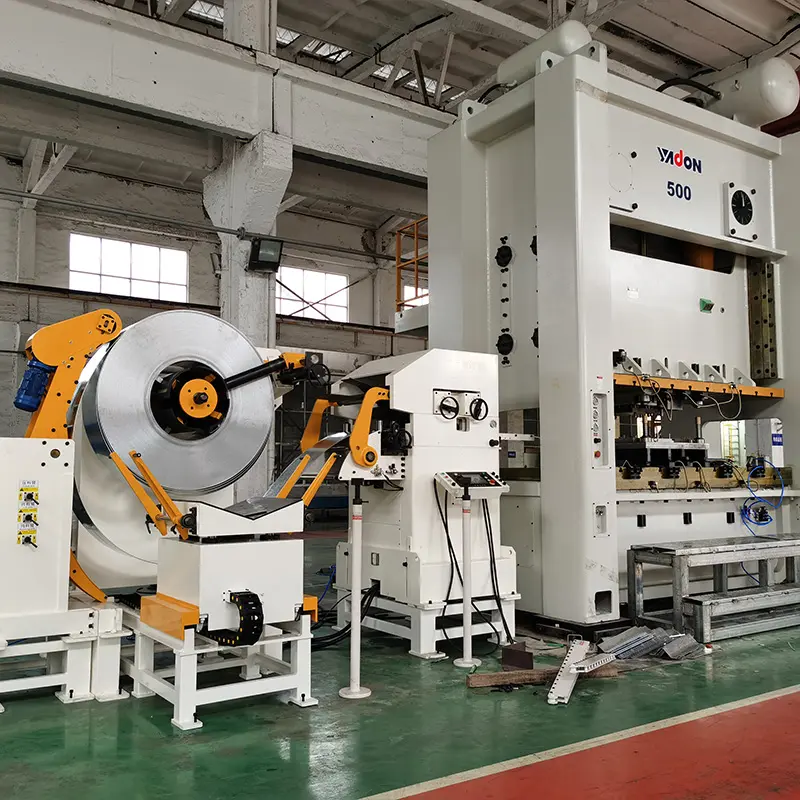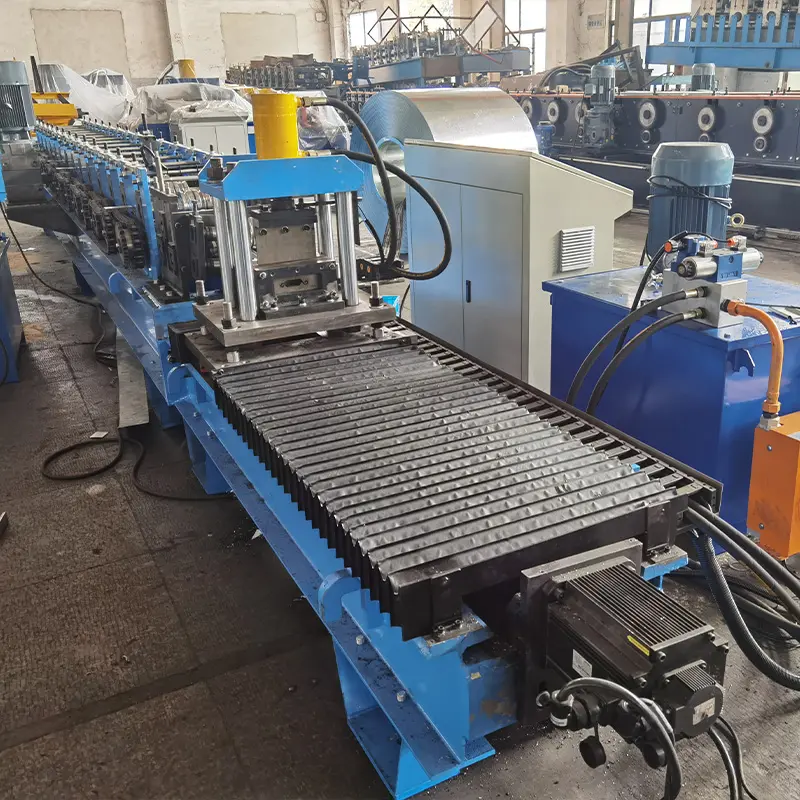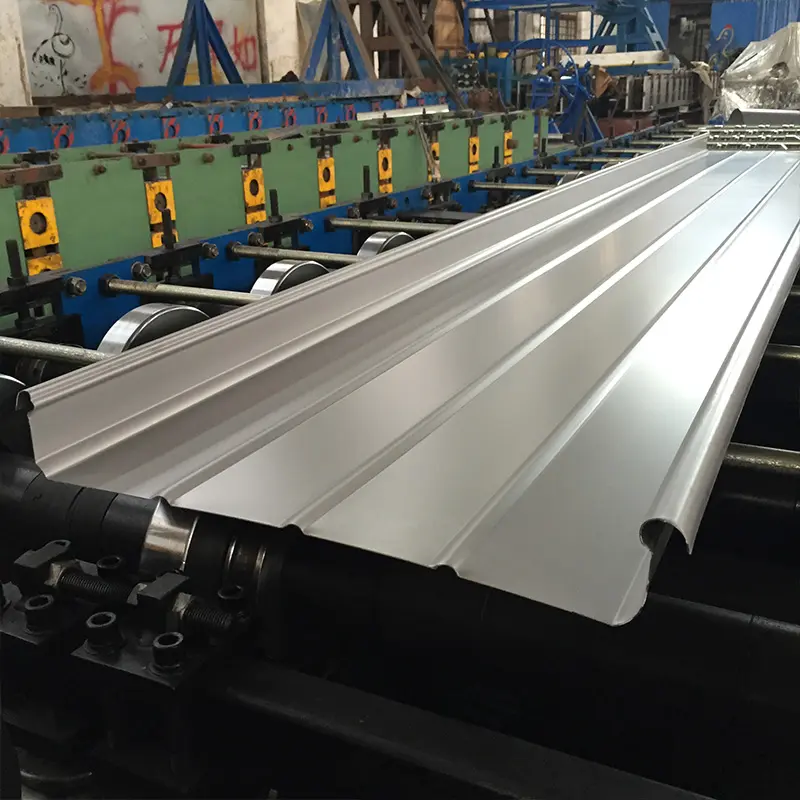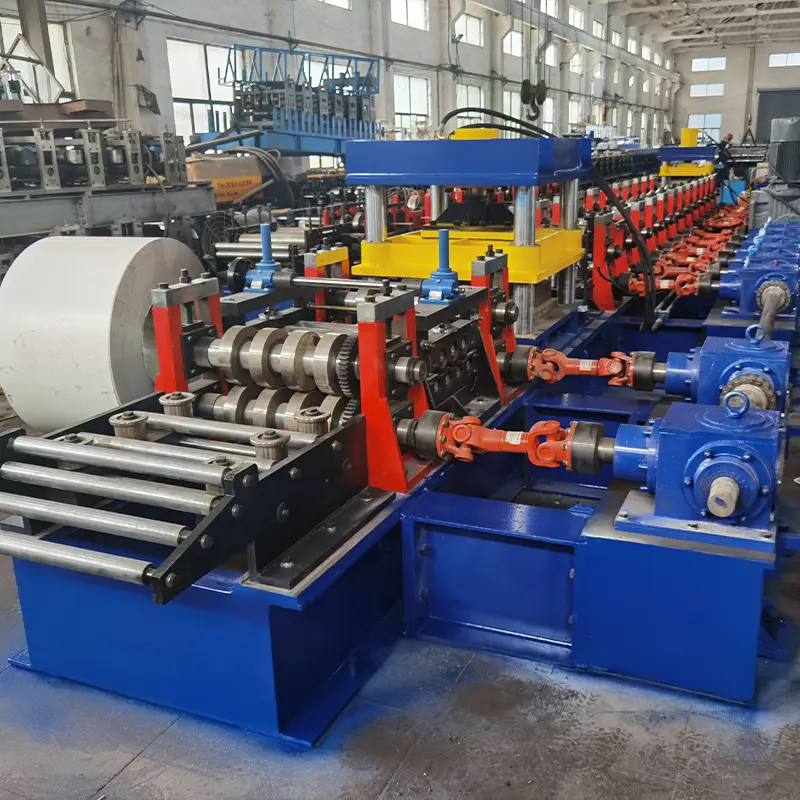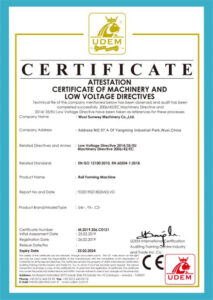Overview OF ceiling channel roll forming machine
Ceiling channel roll forming machines are used to produce the C-channel sections used for suspended ceilings. These lightweight channels snap on to ceiling grid T-sections to support the ceiling panels.
This guide provides a comprehensive overview of ceiling channel roll former working principles, component parts, specifications, sizes, configurations, accessories, applications, benefits, manufacturers, costs, considerations for buying, maintenance and troubleshooting tips.
How Ceiling Channel Roll Forming Works
The operating sequence of a ceiling channel roll former is:
- Coil of sheet metal loaded into the de-coiler
- Sheet enters the leveler machine for initial straightening
- Leveled sheet fed into the forming section entry guides
- Sheet passes through consecutive roll forming stands
- Rolls gradually bend the sheet into C-channel shape
- Formed channel sections exited onto cutting table
- Saw blade cuts profiles to desired lengths
- Conveyor stacks cut parts for bundling
- Hydraulic power pack provides power for roll stations
- PLC control coordinates production sequence
Rollers are precision machined to bend metal coil into ceiling channel profiles.
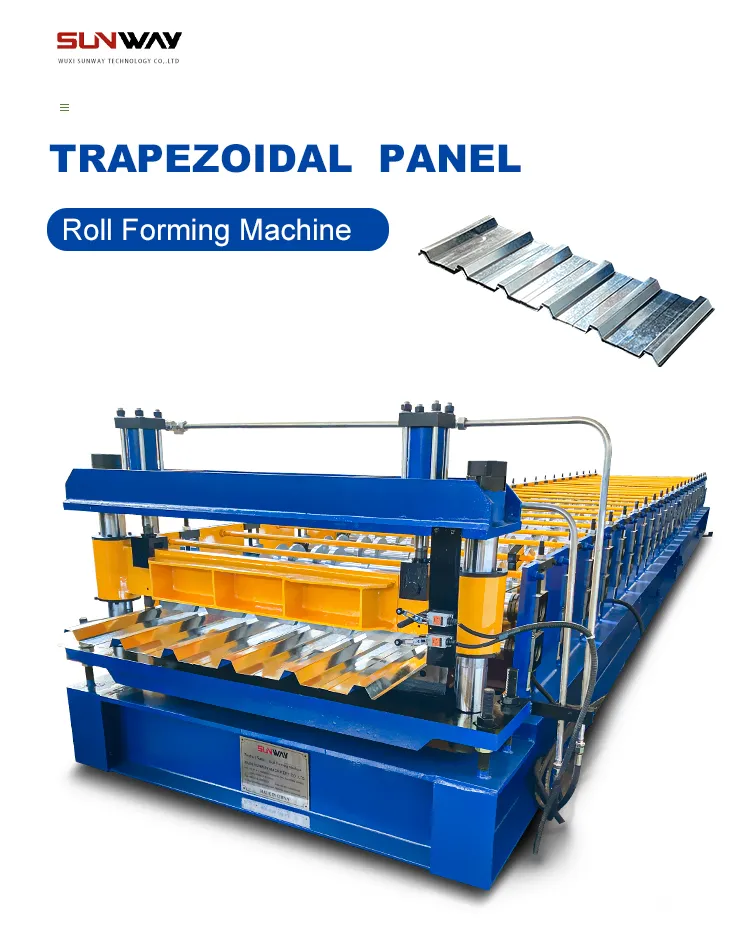
Main Components of Ceiling Channel Roll Formers
Key components of ceiling channel roll forming machines:
- De-coiler – Holds coil of sheet metal
- Feed table – Feeds metal sheet into machine
- Roll forming stations – Gradually form the channel shape
- Forming rolls – Hardened tool steel, machined to profile
- Cutting unit – Circular saw or shear cutter
- Stacking table – Catches cut parts and stacks
- Bundling unit – Straps parts into bundles
- Hydraulic system – Provides power to stations
- Electrical cabinet – PLC, drives, motor controls
- Guarding – For operator safety during production
Proper integration of these components produces quality ceiling channels.
Specifications of Ceiling Channel Roll Formers
Typical specifications:
| Parameter | Specification |
|---|---|
| Roller diameter | 100-150 mm |
| Number of stations | 8-16 |
| Max line speed | 15 m/min |
| Min sheet thickness | 0.4 mm |
| Max sheet thickness | 0.8 mm |
| Sheet width | 50-200 mm |
| Channel height | 13-50 mm |
| Cut lengths | 1-6 meters |
| Main motor power | 3-5.5 kW |
The number of stations and motor power determine the production rate. More stations allow larger channel sizes.
Types of Ceiling Channel Profiles Produced
Common ceiling channel profiles produced:
- Standard 13/16” channel – for residential ceilings
- Narrow 9/16” channel – for tighter spaces
- Deep channels – up to 2” for heavy duty
- Double leg channels – clips on two sides
- Shadow channels – recessed lighting
- Perforated channels – for sound absorption
- Decorative channels – stippled, embossed etc.
Interchangeable roll sets allow different profiles to be run.
Ceiling Channel Roll Former Configurations
Typical machine configurations include:
- Compact – Entry guides to saw in one frame
- Modular – Bolt-together sections for portability
- In-line – Straight from decoiler to exit
- L-shaped – Saves floor space
- Closed-loop – Coiler on exit side
- Custom – Shop-floor layout flexibility
- Semi-auto – Manual coil loading
- Fully auto – Powered decoiler, stacker etc.
Layouts are designed around production space and automation needs.
Accessories for Ceiling Channel Roll Formers
Common accessory equipment includes:
- Punching unit – For holes, slots, patterns
- Embossing rolls – Decorative surface textures
- CNC bending – Imparts bends when needed
- Notching – Punch notches along edge
- Servo roll feed – For speed and accuracy
- Quick change kits – For fast profile changes
- Safety guarding – Full perimeter fencing
- Decoiler mandrel – Needed for coil holding
- Tooling protection – Covers for roll stands
- Custom conduit – For feeding shaped coil
Accessories enhance flexibility, productivity, and safety.
Applications of Ceiling Channels
Ceiling channel profiles produced on these roll formers are used in:
- Residential ceilings – Homes, apartments
- Commercial buildings – Offices, retail spaces
- Institutional spaces – Schools, hospitals
- Hospitality sector – Hotels, gymnasiums
- Clean rooms – Pharma, medical, food processing
- Modular buildings – Prefabricated structures
- In-store fixtures – Display booths, signage
- Exhibition stands – Temporary booths, canopies
Ceiling channels provide an economical and easy way to create suspended ceilings across sectors.
Benefits of Ceiling Channel Roll Forming
Key benefits of ceiling channel roll forming:
- Faster production than manual bending
- Lower cost than extruded channels
- High dimensional accuracy from precision roll tooling
- Zero scrap compared to other methods
- Consistent quality along entire length
- लचीला for various profiles and sizes
- Compact footprint suitable for local production
- Safer operation than press brakes or notching
- Scalable production from small to large volumes
Roll formed channels outperform other fabrication approaches for quality, cost and delivery.
Leading Manufacturers of Ceiling Channel Machines
Top ceiling channel roll former manufacturers include:
- Eurobend – European engineered high speed lines
- Metform – Customized roll forming solutions
- Jupiter Rollforming – Robust machines made in India
- RollMax – Affordable machines with high quality
- Zhongfu – Wide range of roll former models
- Samco – Production lines integrated with embossing and punching
Cost Considerations
Typical factors affecting ceiling channel roll former costs:
- Production speed – Directly affects pricing
- Level of automation – Manual vs powered decoiler, conveyors etc.
- Channel size range – Wider sizes need larger diameter rolls
- Additional tooling – For punching, notching, embossing
- Installation and training – Often included in machine price
- Shipping expenses – Varies based on location
Total price range – $15,000 to $65,000+ depending on above factors
Higher production needs warrant investing in more advanced automated equipment.
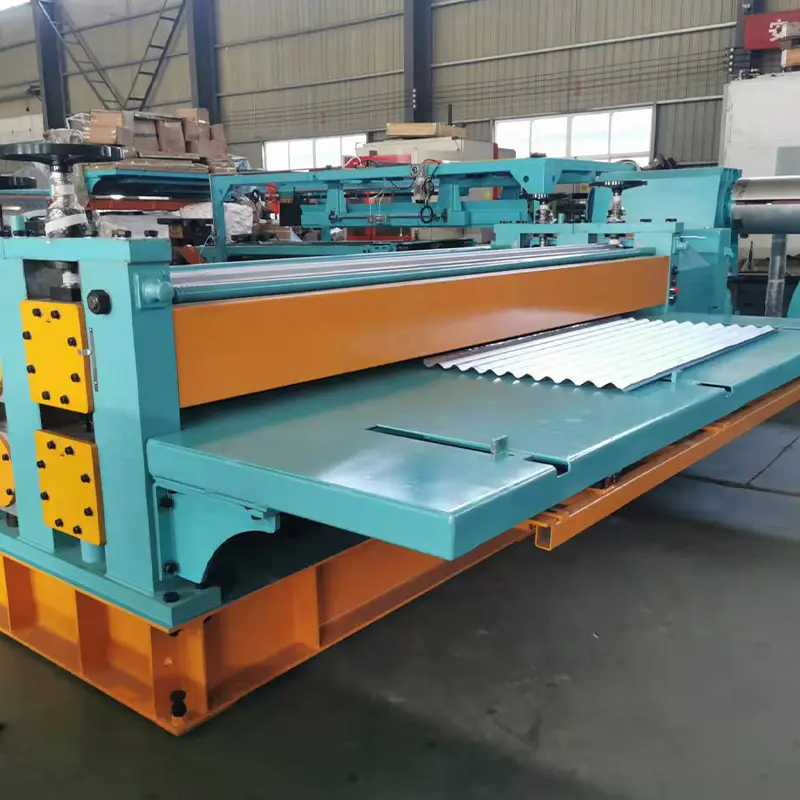
Buying Considerations
Key considerations when purchasing ceiling channel roll forming equipment:
- Type and size of ceiling channel sections required
- Estimated production volumes and annual output
- Single profile or quick changeovers for multiple profiles
- Amount of variation needed – holes, cutouts, bends etc.
- Available installation space and layout
- Operator skill level and training needs
- Safety protection and noise reduction
- Options for future upgrades and expansion
- Local dealer support and maintenance capabilities
Analyzing current and future production needs will lead to selecting the right roll former.
Maintenance Tips
Recommended maintenance activities:
- Daily cleanup of metal debris using vacuum
- Lubricating roll bearings, gearboxes, conveyors per schedule
- Inspecting roll wear and replacing damaged/worn items
- Verifying hydraulic fluid level and checking for leaks
- Confirming electrical wiring is intact with no loose connections
- Testing emergency stop buttons and verifying guards
- Monitoring belt tension and chains for stretching
- Documenting maintenance work details
- Stocking spare parts like bearings, blades, belts
Proactive maintenance improves uptime and output consistency.
Troubleshooting Tips
Troubleshooting common ceiling channel roll former issues:
Profile distortion
- Check roll alignment and spacing
- Replace any damaged or worn rolls
- Adjust roll pressure as needed
Uneven cutting length
- Realign cutting blade
- Inspect sensor positioning
Line speed inconsistency
- Test servo motors and drives
- Check for slipping transmission belts
Machine jamming
- Increase lubrication
- Clear any debris in stations
- Ensure no loose machine parts
Hydraulic power loss
- Check cylinder seals, valves, pumps
- Inspect fluid level and filter
- Tighten any leaking fittings
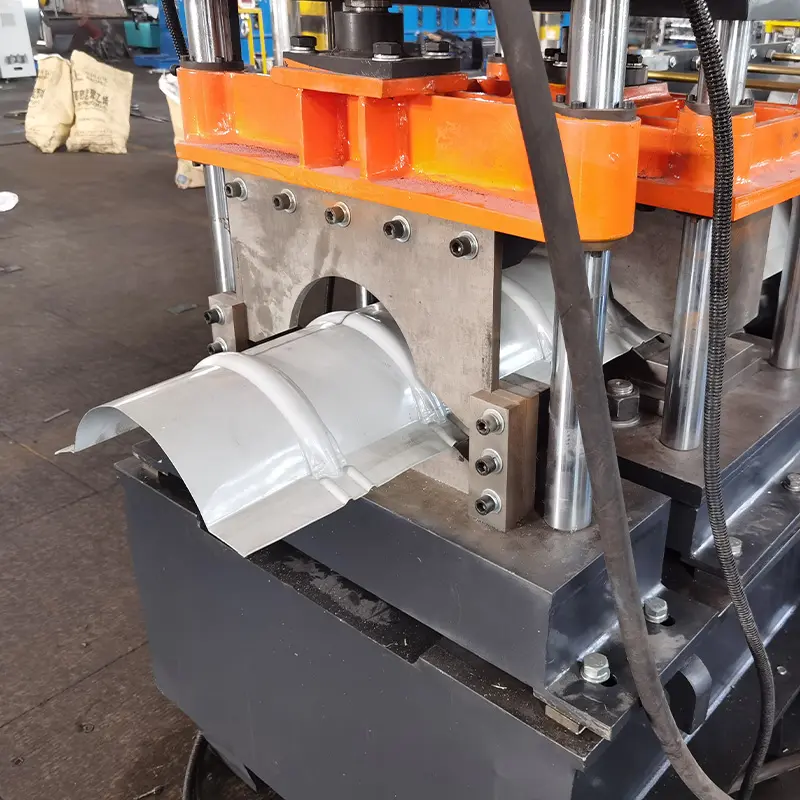
FAQs
What materials can be roll formed into ceiling channels?
Common materials include galvanized steel, stainless steel, aluminum and plastic coated steel. Galvanized steel offers the best value for most applications.
What thickness range can be typically processed?
Standard roll formers can process metal sheet from 0.4 mm to 0.8 mm thickness. Special models are available for thicker sheets if needed.
What is the typical production rate?
10-15 meters per minute. Maximum speed varies based on part size, features, and material thickness.
What length of channels can be produced?
1 to 6 meter lengths are typical. Extended lengths can be achieved by adding additional rolling stations or using a notcher instead of saw.
What factors affect the machine price?
Major factors include production speed, size range, level of automation in terms of powered decoiler, conveyors, quick changeovers etc., and additional accessories.
निष्कर्ष
Ceiling channel roll forming machines deliver high precision and consistency unmatched by other fabrication approaches. With due diligence in selecting the appropriate equipment matched to production needs, manufacturers can gain rapid ROI through material and energy savings, reduced labor, and improved product quality. When equipped with quick changeovers and accessories, ceiling channel roll formers provide a versatile solution.

